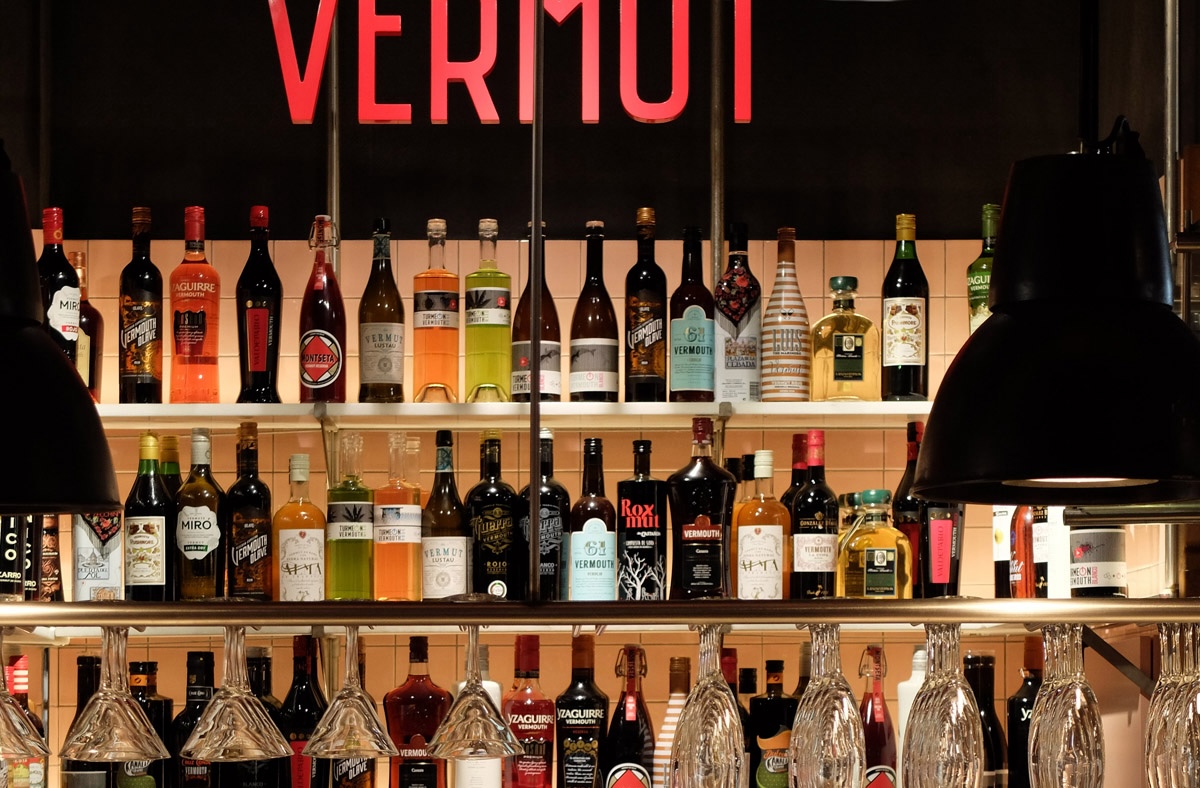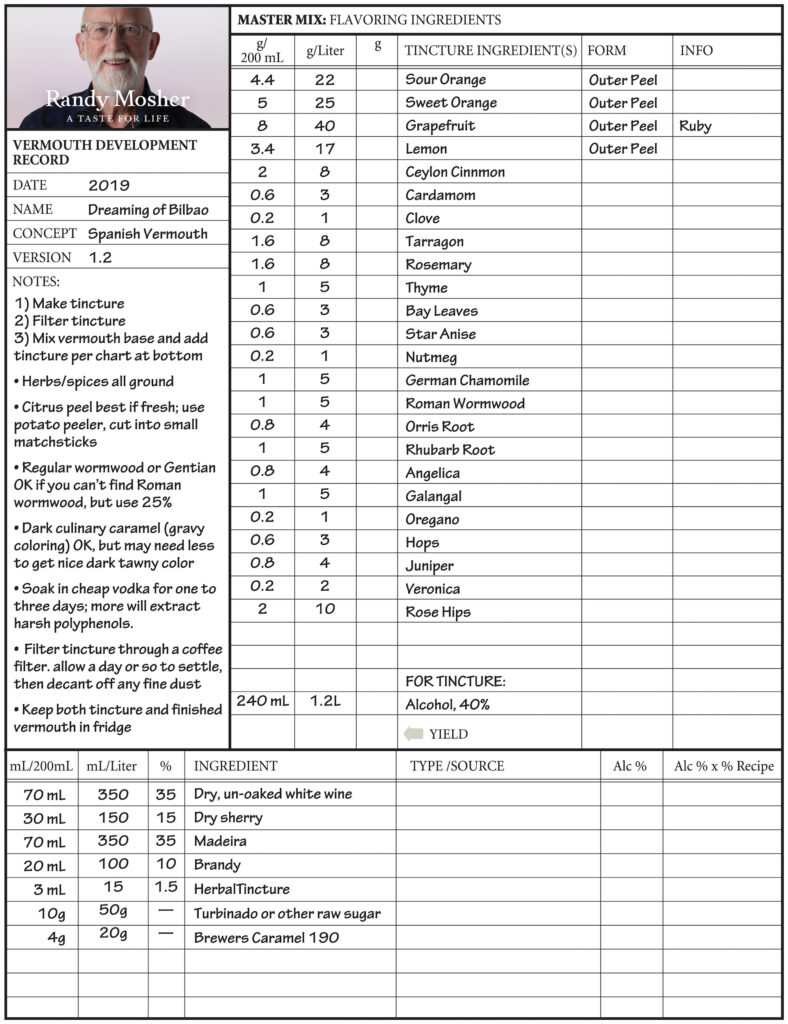I had been researching and recreating antique vermouth recipes for some time before I was invited to Northern Spain by Los Cerverceros Caseros, the Spanish homebrewers’ association. I was excited to see vermouth everywhere in Bilbao, Barcelona and Madrid, and fascinated to discover how the locals enjoyed it.

Pretty simply, it turned out. The normal serving for vermouth is just a few ounces in a glass with a little ice, garnished with several green olives on a stick and a hunk of sweet orange peel. The salty olives actually make the vermouth sweeter by contrast, and also through a mechanism by which a little sodium enhances the efficacy of our sweet receptors, a trick which many in the pastry world know through practical experience.
As a drink on its own, vermouth is nice because it has lots of flavor and enough bitterness to give it a substantial presence and length on the palate, but it’s a good deal lower in alcohol than a normal cocktail. They’re quite easy to make: simply macerate the herbs and spices in vodka for a day or two (no longer or you start to draw out harsh polyphenols), then strain through a coffee filter and allow to stand for another day or so to let the super-fine particulates settle, then decant off. This gets blended into a fortified wine base, which may also contain unfermented grape juice, caramel syrup and a splash of brandy.
Compared to French or Italian versions, the Spanish ones are softer and better balanced, as you would expect for a drink that’s meant for consumption in a starring role.
So here’s my recipe. It contains mainly culinary herbs and spices, although some of them would be considered medicinal, so you’ll need a shop specializing in those, or go online to someplace like Starwest Botanicals or Mountain West Herbs. Feel free to make substitutes, as these recipes tend to be robust and gracefully handle a bit of tinkering. If you want to go off on your own and really explore, there are old books available online with different recipes, which maybe I’ll dig into in a future post. I’ve found that my own experimenting has been greatly aided by the understanding that these, like bitters, amari and other bitter beverages, are generally composed by three groups of flavors: herbal/evergreen, sweet spice and rooty/fruity/citrus. You could even make up three tinctures, one of each family, and then blend these together for different styles. You may, for example, want more evergreen and less sweet spice in a dry pale style.
Click the recipe for PDF download


